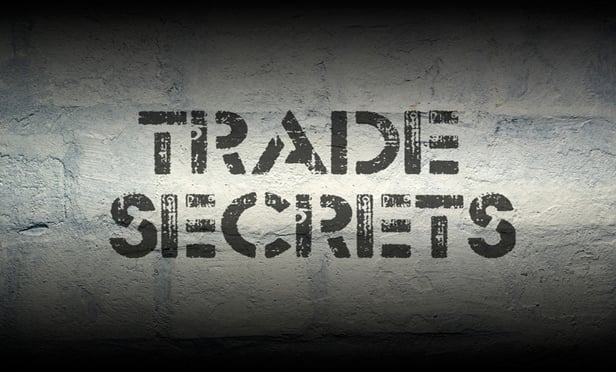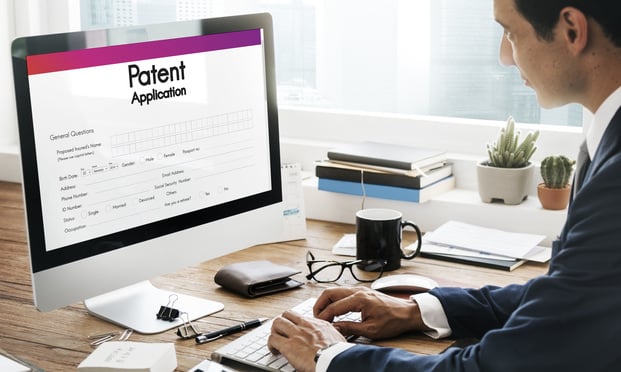Features

The Curious Persistence of the Six-Factor Trade Secret Test
This two-part article discusses the proof required for information to be considered a trade secret under U.S. statutory law, and includes detailed insight into the six-factor test outlined in the Restatement of Torts. Part One includes the evolving tests for determining a trade secret.
Features

Beyond the Logo: How AI Complicates Trademark Protection In the Digital Age
Today, building brands solely on the promise of a different product or service has become unsustainable. Any “new and improved” feature or benefit is quickly eclipsed by competitors. Consequently, brands signal category superiority not through rational claims, but by reinforcing a distinct persona — a “ness” comprised of distinguishing traits and behaviors that form an ownable brand essence difficult for competitors to replicate.
Features

Swearing Behind: Overcoming Asserted Prior Art in PTAB Proceedings
Part One of a Two-Part ArticleThis two-part article discusses the various legal and evidentiary requirements for antedating and removing prior art that patent owners should consider when their pre-AIA patents are challenged based on a prior art publication or activity that is not otherwise subject to a statutory bar. It also addresses considerations for petitioners to consider when developing their initial and ongoing invalidity strategies. Part One leads off with a discussion of the evidentiary requirements for proving earlier invention, conception and diligence and actual reduction in practice.
Features

Patent Strategy Tips from Fed. Circ. 'Kroy v. Groupon' Ruling on Collateral Estoppel
The U.S. Court of Appeals for the Federal Circuit recently addressed the usage of the doctrine of collateral estoppel in patent infringement cases. Specifically, the court considered whether a finding of invalidity of claims by the PTAB at an inter partes review could be used to estop a patent holder from asserting patent infringement of different claims of the same patent in district court litigation.
Features

Post-Amgen Patent Playbook: Section 112 Under the Microscope
The Supreme Court’s unanimous 2023 decision in Amgen v. Sanofi reshaped enablement analysis for broad genus patent claims. In the wake of Amgen, broad functional claims have been scrutinized rigorously for sufficient disclosure. This article summarizes key post-Amgen decisions, which illustrate how patent drafters and litigators must navigate the fine line between claim breadth and disclosure depth in the post-Amgen era.
Features

ChatGPT’s Ghibli-Style Images Are Testing Copyright Law
Last month, a flood of whimsical, dreamlike portraits in the style of Studio Ghibli (the Japanese animation studio) swept across social media. What began as a playful social trend quickly raised legal concerns. Within days, users began reporting that OpenAI had restricted prompts referencing specific artistic styles. This trend offers a live case study of how generative AI may implicate core doctrines of copyright law, including derivative works, substantial similarity, and fair use.
Columns & Departments

IP News
Federal Circuit Examines Written Description Requirements for U.S. Patent Application Publications Used as Prior Art Under Pre-AIAFederal Circuit Denies Preliminary Injunction In a Biologics Price Competition and Innovation Act Case
Features

D.C. Circuit Court Rules That Artificial Intelligence Cannot Solely Author Copyrightable Works
The D.C. Circuit affirmed that AI cannot be the sole author on a copyright-registered work, but left questions about the future of AI authorship in copyright for Congress to resolve.
Features

Writing Strong Antibody Claims: Avoiding or Addressing USPTO Rejections for Written Description and Enablement
Many patent applicants currently face difficulty in obtaining antibody claims because of written description and enablement rejections under 35 U.S.C. §112(a). The USPTO routinely rejects claims as too broad, arguing that such claims cover more antibodies than the specification discloses, or that undue experimentation would be needed to determine whether an antibody reads on the claims. These heightened disclosure requirements increase laboratory costs to generate sufficient data for a §112(a)-proof specification.
Features

Reframing the AI Debate Will Improve How We Practice Law
For the last several years, I’ve become obsessed with a particular legal, technological, and philosophical question: Can a robot invent on its own?
Need Help?
- Prefer an IP authenticated environment? Request a transition or call 800-756-8993.
- Need other assistance? email Customer Service or call 1-877-256-2472.
MOST POPULAR STORIES
- "Holy Fair Use, Batman": Copyright, Fair Use and the Dark KnightThe copyright for the original versions of Winnie the Pooh and Mickey Mouse have expired. Now, members of the public can create — and are busy creating — their own works based on these beloved characters. Suppose, though, we want to tell stories using Batman for which the copyright does not expire until 2035. We'll review five hypothetical works inspired by the original Batman comic and analyze them under fair use.Read More ›
- Major Differences In UK, U.S. Copyright LawsThis article highlights how copyright law in the United Kingdom differs from U.S. copyright law, and points out differences that may be crucial to entertainment and media businesses familiar with U.S law that are interested in operating in the United Kingdom or under UK law. The article also briefly addresses contrasts in UK and U.S. trademark law.Read More ›
- Removing Restrictive Covenants In New YorkIn Rockwell v. Despart, the New York Supreme Court, Third Department, recently revisited a recurring question: When may a landowner seek judicial removal of a covenant restricting use of her land?Read More ›
- The Stranger to the Deed RuleIn 1987, a unanimous Court of Appeals reaffirmed the vitality of the "stranger to the deed" rule, which holds that if a grantor executes a deed to a grantee purporting to create an easement in a third party, the easement is invalid. Daniello v. Wagner, decided by the Second Department on November 29th, makes it clear that not all grantors (or their lawyers) have received the Court of Appeals' message, suggesting that the rule needs re-examination.Read More ›
- Warehouse Liability: Know Before You Stow!As consumers continue to shift purchasing and consumption habits in the aftermath of the pandemic, manufacturers are increasingly reliant on third-party logistics and warehousing to ensure their products timely reach the market.Read More ›
